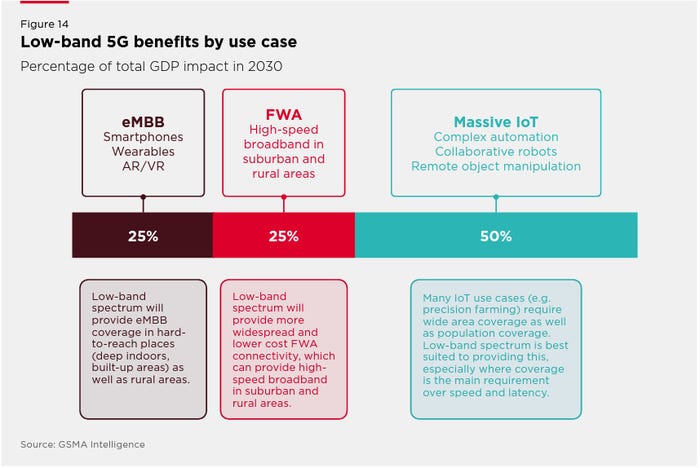GSMA makes the case for more mobile spectrumGSMA makes the case for more mobile spectrum
Telecoms industry body the GSMA has released a couple of reports waxing on future spectrum allocation and its economic implications.
March 22, 2023

Telecoms industry body the GSMA has released a couple of reports waxing on future spectrum allocation and its economic implications.
In the first report titled ‘For the Benefit of Billions’ the GSMA claims to have laid out the mobile industry’s ‘vision of how to maximise the benefits of mobile spectrum for billions of people worldwide’, ahead of the ITU World Radio Communication Conference in November, decisions made at which guide national allocations of spectrum, we’re told.
The report is aimed at governments and regulators and how they can use the event to ‘develop thriving and competitive communications markets’ and it also seems to have a heavy emphasis on making sure everyone can have access to mobile services. More specifically, the report concludes that:
Increasing capacity for mobile at WRC-23 will lead to better services delivered from less costly, more sustainable networks.
Additional low-band spectrum can deliver broad and affordable connectivity, building bridges towards digital inclusion.
Mid-band expansion can drive city-wide 5G, transforming industries and delivering mobile services that are an asset to their countries, ensuring their industrial agility in the global marketplace.

The GSMA has simultaneously put out a report titled ‘Socio-Economic Benefits of 5G: The importance of low-band spectrum’, which looks at how low-band spectrum is a ‘driver of digital equality.’ You can read the full report here should you feel so inclined, but it’s conclusions are listed as:
Low-band 5G is expected to drive around $130 billion in economic value in 2030.
Half of the impact will come from massive IoT (mIoT). Many existing and future IoT use cases require wide area coverage, in addition to population coverage, which low-band spectrum is best suited to provide.
MIoT applications are set to play an important role in digital transformation across a range of economic sectors, including manufacturing, transport, smart cities and agriculture.
The rest of the economic impact will be driven by enhanced mobile broadband (eMBB) and fixed wireless access (FWA), as low bands will play a critical role in delivering high-speed broadband connectivity in areas underserved by fixed networks.
Without sufficient low-band spectrum, the digital divide is likely to widen, and those living in rural areas will be excluded from the latest digital technologies.
“WRC-23 is a critical inflection point for every government, every business and every person worldwide that use mobile communications,” said Mats Granryd, Director General of the GSMA. “More than five billion people rely on mobile every day, and the evidence is clear: increasing mobile capacity will deliver the maximum socio-economic benefit for billions worldwide, and provide the biggest boost to national economies.
“Future growth, future jobs and future innovation all depend on policymakers making choices at WRC-23 that give 5G the room to grow and allow it to play a transformational role across all sectors of our societies and economies.”
In summery then, the GSMA seems to be making the point that freeing up more spectrum will have the duel benefits of letting 5G stretch its legs and perhaps deliver on the initial promises it was sold on, and that there are socio-economic consequences for those not already well connected if this isn’t done.

Get the latest news straight to your inbox. Register for the Telecoms.com newsletter here.
About the Author
You May Also Like










.png?width=300&auto=webp&quality=80&disable=upscale)


_1.jpg?width=300&auto=webp&quality=80&disable=upscale)